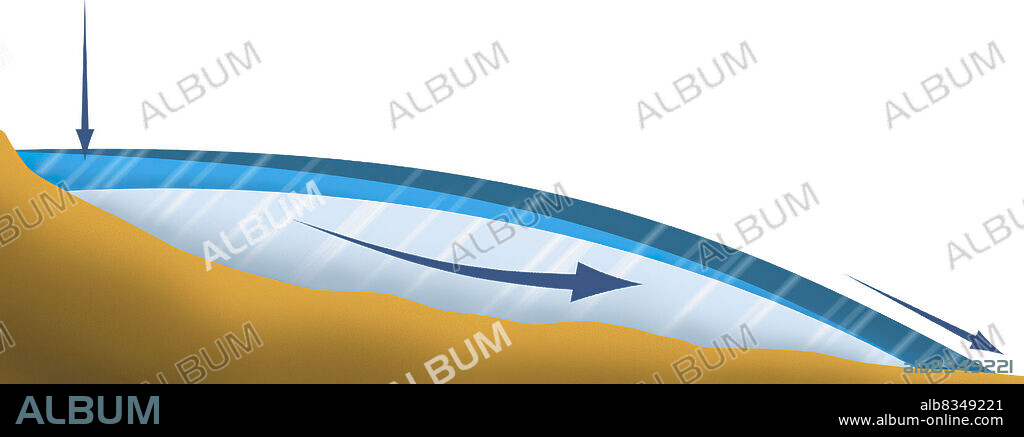alb8349221
All glaciers are composed of two successive zones: the zone of accumulation, at the top of the glacier, and the zone of ablation, at the bottom. The equilibrium line, which separates the two zones, is clearly visible at the end of summer, when the top of the glacier is covered with fresh white snow while its bottom part is composed of ice and darker, old snow. In the Alps, this line is at 3,000 m altitude, but it is much higher in the Himalayas and the Andes. The glacier is in mass balance when gains of new snow in the zone of accumulation compensate for losses in the zone of ablation. When this balance is upset, the glacier retreats or advances.

|
Add to another lightbox |
|
Add to another lightbox |



Buy this image.
Select the use:

Caption:
All glaciers are composed of two successive zones: the zone of accumulation, at the top of the glacier, and the zone of ablation, at the bottom. The equilibrium line, which separates the two zones, is clearly visible at the end of summer, when the top of the glacier is covered with fresh white snow while its bottom part is composed of ice and darker, old snow. In the Alps, this line is at 3,000 m altitude, but it is much higher in the Himalayas and the Andes. The glacier is in mass balance when gains of new snow in the zone of accumulation compensate for losses in the zone of ablation. When this balance is upset, the glacier retreats or advances.
Credit:
Album / Universal Images Group
Releases:
Model: No - Property: No
Rights questions?
Rights questions?
Image size:
4143 x 1553 px | 18.4 MB
Print size:
35.1 x 13.1 cm | 13.8 x 5.2 in (300 dpi)
Keywords:
51378 • COLOR • COLOUR • EARTH • EQUILIBRIUM LINE • EVOLVING LANDSCAPE • GEOLOGIA • GEOLOGY • GLACIAR • GLACIER • ILLUSTRATION • ILLUSTRATIONS • PRECIPITATION
 Pinterest
Pinterest Twitter
Twitter Facebook
Facebook Copy link
Copy link Email
Email
